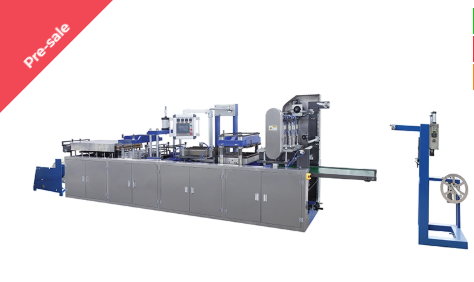Views: 0 Author: Site Editor Publish Time: 2025-09-25 Origin: Site
Selecting the right Thermoforming Machine can transform production speed and quality. A poor choice raises costs and reduces efficiency. This article explains the essential features you should evaluate. By the end, you’ll know how to choose a high-performance thermoforming solution.
Heating is where the process starts, and it sets the tone for quality and efficiency.
A stable heating system ensures even material softening. Inconsistent heating leads to warping, weak spots, or wasted sheets. Machines with fast warm-up times shorten production cycles.
Infrared and radiant systems allow precise, localized heat delivery. Zonal controls minimize energy use while avoiding overheated or underheated areas.
High-performing machines use insulated components and smart shut-off systems. These reduce operating costs without sacrificing output speed.
Tips: Evaluate heater response times during a factory demo. A few seconds saved per cycle adds up across large runs.

The forming stage defines the accuracy and complexity of your parts.
Vacuum forming: simple and cost-effective for basic shapes.
Pressure forming: delivers higher detail and sharper definition.
Mechanical forming: applies extra force for complex geometries.
Medical trays and automotive panels often need tight tolerances. Pressure or mechanical forming handles these demands better than basic vacuum systems.
Consistency is as valuable as precision. A high speed thermoforming machine maintains stable pressure and cycle control, producing identical parts across thousands of runs.
Tips: Always request sample parts made on the machine before purchase to validate tolerances.
Modern products require diverse materials, from lightweight PET to robust ABS.
Look for machines that handle a wide spectrum without needing extensive adjustments.
Sustainability matters. Machines must adapt to eco-friendly sheets without compromising cycle times.
Variable clamping force and adjustable heaters help switch between thin films and thick-gauge sheets smoothly.
Tips: If your portfolio spans industries, prioritize versatility over specialization. It reduces future capital spending.
Downtime is one of the biggest cost drivers in manufacturing.
Tool-less changeover systems cut setup time from hours to minutes.
Running multiple cavities in one cycle boosts throughput without expanding footprint.
High-quality molds ensure parts meet dimensional requirements even under heavy use.
Tips: Ask vendors about mold compatibility across different machine models for long-term flexibility.
Automation improves productivity, but it also improves reliability.
Programmable logic controllers (PLCs) enable repeatable cycles and consistent product quality.
A user-friendly interface lowers training time and reduces operator error.
Systems that display temperature, pressure, and production counts allow rapid troubleshooting.
Tips: Consider remote monitoring capabilities for multisite operations. Central oversight saves time and resources.
Cooling has a direct impact on cycle time and surface finish.
Water-based cooling is faster, but air systems can be easier to maintain.
Different plastics respond better to tailored cooling rates.
Look for machines that recycle cooling water or use closed-loop systems.
| Cooling Type | Advantages | Considerations |
|---|---|---|
| Forced Air | Simple setup, lower cost | Longer cycles, less control |
| Water-Based | Faster cycles, precise | Higher maintenance, water use |
Cooling often determines real-world output speed more than heating. Do not overlook it.
Long-term ownership costs can outweigh purchase price.
Frames made from reinforced steel and coated components resist wear in demanding environments.
Machines with wide access panels reduce downtime during maintenance.
Emergency stops, protective shields, and certified designs protect operators and meet regulations. Verify spare parts availability before signing contracts. Limited support can cripple production later.
Different industries impose different requirements, so match features carefully.
Packaging lines may need smaller machines running at high speeds, while automotive may require large bed sizes.
Packaging: high-output, thin-sheet forming.
Automotive: thicker sheets, complex geometries.
Medical: precision forming and cleanroom compliance.
Energy savings, automation, and reduced downtime often pay for themselves in under three years (needs verification).
Tips: A cost-benefit analysis over five years usually highlights efficiency gains that justify premium machines.
A high-performance Thermoforming Machine is a smart long-term choice. It delivers heating efficiency, forming precision, and material flexibility while improving safety and automation. Durable systems lower costs and support diverse industries like packaging and automotive.
MINGDU offers advanced thermoforming solutions with reliable quality and tailored service. Their machines provide consistent performance and help manufacturers achieve efficiency, durability, and sustainable growth.
A: Key features include rapid heating, precise forming, and automation for efficiency.
A: Look for systems with zonal heating and efficient cooling to shorten production cycles.
A: They allow quick adaptation to ABS, PET, and multi-cavity molds for flexible output.